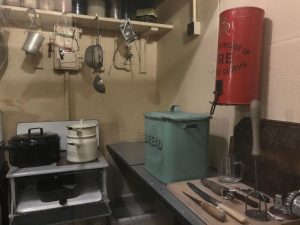Today is National Bubble Bath Day. Yes, it’s a thing!
Would you like having a bath only once a week, in your kitchen, using only carbolic soap, in a hip tin bath like this? No? We don’t blame you, but this is what many Victorian families. Brrrrr. Washing body parts separately, such as arms, hands and faces were executed regularly but full-body baths were a different beast all together.
History of Soap
Ancient Babylonians are credited for inventing soap. Evidence for this has been found on Babylonian clay containers dating back to 2800 B.C. Inscriptions on the containers present the earliest known written soap recipe showing their soap was made from fats boiled with wood ash and water.
Liquid soap only really entered the market in the 19th century, and bar soap began to decline during the world wars, as the necessary ingredients in short supply. From the 1950s, the bar of soap was further relegated on shop shelves by the more convenient liquid soap. A good liquid dispenser was key. Marketers claimed claimed that this new liquid soap was more hygienic, more convenient, and altogether classier than the traditional soap bar, crack and all.

Novelty Soap
“Smile and Cry,” Novelty Soap c. 1930 Made by Norton’s, England, 1930-39
National Trust Museum of Childhood
Make bath time fun for your little ones but using a baby’s head-shaped soap. It’s a rather odd design with one side of the face being a happy baby face and the other side a sad face.
Printed, in blue on the box, ‘Make bath-time play-time with this novel twin-faced Baby Soap . Change the Baby’s tear to a happy laugh, in an instant’ on the left side and ‘This delicately perfumed soap is ideally suited to Baby’s soft skin especially soothing because of its rich Lanoline content’. ‘Contains Lanoline Essential For Babies Skin, Sole Distributors M and R Horton Ltd. 417/419 Battersea Park Road, London, SW11′.
Has anyone seen these before? Perhaps in your nightmares? Do you remember any scary novelty soap from your childhood? Please share in comments.
–
Main photo credit ©National Trust Images/James Dobson. The North Spare Bedroom at Standen House, West Sussex



